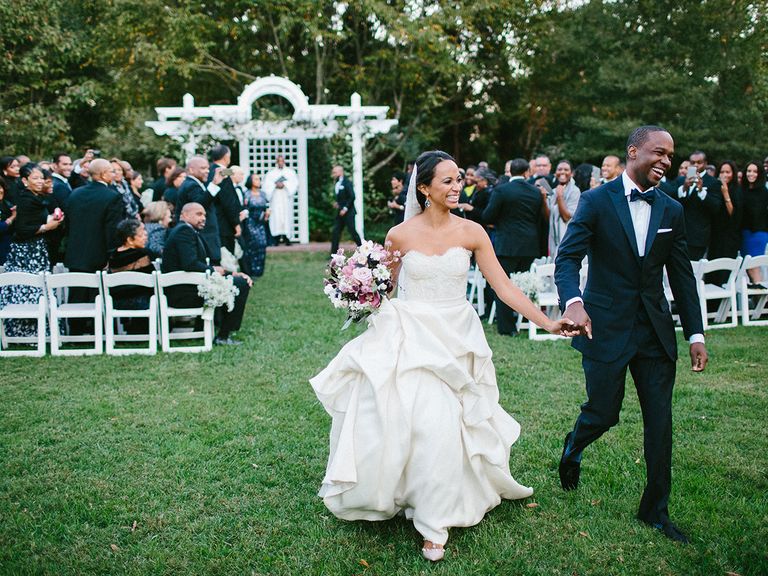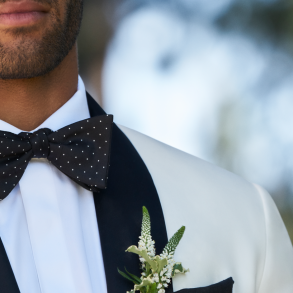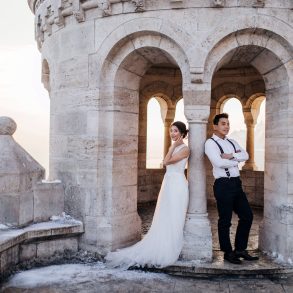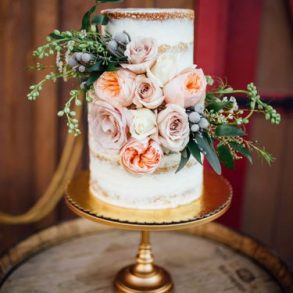The history behind a Western wedding is centuries old and filled with – sometimes odd and other times beloved – traditions. And when we mention “Western” we are not speaking of cowboy boots or dusty saloon style, we are talking about the contractual ceremony that we’re all used to.
The Western wedding has taken multiple twists and turns throughout time but there are some customs that have stuck. It has become one of the biggest industries in the Western world influencing trends and TV shows, Pinterest boards and magazines abound, Why? And how can you use them to plan your very own?
From tossing the bridal bouquet to making sure the groom stands on the right at the ceremony, there are some origins that you may be curious about concerning all the intricacies of a classic wedding.
If you’re looking to pull off your own traditional western wedding, you should first understand the history behind the event and which pieces you’d like to take and possibly modernize for your own big day.
The History
Earliest Origins
Did you know that western wedding traditions originate as far back as Ancient Greece and Rome? They started out as less of a celebration and more of a contractual agreement between the two parties. Over time, that agreement morphed into one of life’s biggest events and a much more commercialized business venture for designers, vendors, and the like.
You may have heard this fact before but weddings didn’t actually start out as a contract between a man and a woman, instead, it was between two men; the groom and the bride’s father. There was a dowry involved (yikes!) and arranged marriages were also alive and well.
Middle Ages
And it wasn’t until medieval times that the contract between the two became truly legal and less informal – this is also when laws came into place for women to no longer be traded for goods or payment of any kind. This is a time when more religious qualities became prevalent, such as priest blessings over a marriage although arrangements and inheritance were still the catalysts behind many unions.
Golden Age
Throughout the Elizabethan era and Victorian period, marriages were still being formed by outside hands with women having very little say, or opinion of their own, in the matter. Within these times is when some of the more well-known traditions were taking shape such as bridal whites and exchanging of the rings.
Today
Although we don’t hear many instances of arranged marriages today and there seems to be a near unlimited avenue for people to find and decide on their life partners, there are so many nooks and crannies of a wedding we see still that’s been rooted in these Western traditions.
Even though many have taken on new forms and given new (and less oppressive) meaning, it’s important to know where these customs originated and what you can do to put your own spin on them, if you choose to incorporate them at all.
The Traditions (And Spin-Offs)
The Dowry
The dowry was a piece of property – or another form of payment – by the bride’s family to the groom’s in exchange for the bride herself. This was a very common practice and began in Ancient Roman times.
How You Can Pull It Off
We throw this one completely out the window. Some say that it’s still a tradition for the bride’s family to pay for the wedding (the custom originating with the dowry) but it’s even more common for both sides of the family to contribute – or even the couple themselves to host and throw the main event!
The Bouquet Toss
They say the bouquet toss started in England as a way for the bride to “toss along” her good fortune to another.
How You Can Pull It Off
We say keep this tradition. There may not be any concrete evidence around the “good fortune finding” but it’s a fun moment to participate in with your ladies during the reception.
The Garter Toss
Unlike the bouquet toss, the garter toss actually began in the Dark Ages, when pieces of a bride’s dress would be sought after by the guests. It was said that if you could snag a piece, good fortune would come to you.
How You Can Pull It Off
We say keep this one as well and give it the same meaning as the bouquet toss. It’s the groom passing along his “good fortune” to his pals in a fun and memorable moment throughout the reception! But if you feel more comfortable nixing it, there’s no reason to feel bad about that either.
The Cutting of the Cake
Did you know that this tradition began with the bride doing it alone as a symbol of her loss of virginity? Makes that first slice of cake taste a little different doesn’t it?
Eventually, the tradition evolved into a couple’s activity showcasing their first act done together, as one. We now watch couples share the first piece of cake as well as strengthening the metaphor of their union.
How You Can Pull It Off
We’ve seen this tradition done in a variety of ways.
Cut the cake together or have the service at the venue do it for you before you share the first slice. Smash it into each other’s faces or do it politely with a fork; show off your couple style and grab terrific photos!
You can also consider going the route of adding a novelty groom cake, a popular way to also surprise the groom.
Bride on the Left, Groom on the Right
According to The Knot, long ago, the right arm was considered the sword arm of most fighting men. If a man had to protect his bride, he would hold her with his left hand, and fight off attackers with his right arm.
How You Can Pull It Off
Stand wherever you feel comfortable. Maybe you feel better photographed on the right – as the bride – then go for it! This tradition virtually means nothing to present-day couples and all that matters is your ceremony is just as you envisioned it would be.
Brides Wear White
Brides wearing white became popularized during the Victorian era, specifically after Queen Elizabeth dressed in white at her own wedding. But most of us know the white to be a symbol of the bride’s purity.
How You Can Pull It Off
This tradition has also been thrown out the window. Brides are wearing and incorporating all kinds of unconventional colors from pastels to bolder tones such as red or even black.
Whatever fits your style is what you should go with. But if you’re looking to keep within the more traditional confines – but with your own twist – think about dressing in ivory, off-white, cream, or light champagne.
Throwing the Rice
This tradition began with the Ancient Romans as well and was meant to provoke fertility within the newlyweds. Did you know that the custom began with the throwing of wheat? Until the symbol for fertility changed to rice and the tradition made its shift.
How You Can Pull It Off
Rice isn’t great for the birds, which is why the tradition of rice throwing has become more or less outdated. We still want to symbolize that same hope and wish of fertility though – but with incredible photos!
Brides and grooms have had their guests blow bubbles, throw confetti, and even light up sparklers on their exit out of the reception. The alternatives to throwing rice are endless and can even be another fun way to incorporate it into your overall wedding theme! Just make sure to check in with your venue to see what they allow, some places do not allow confetti/rice/anything to be thrown.









